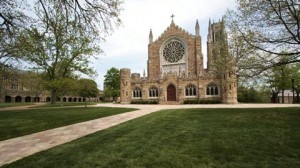December, 2009 archive
Admissions is a Tough Job 0
In this era of the Common Application, Universal Application and relative ease of electronic filing, colleges are having a very tough time determining the percentage of students (yield) who will ultimately say “Yes” to their offer of admittance. The higher the yield percentage the more selective the school. Another way to look at it is the lower the acceptance rate, the higher the yield percentage. For instance, Harvard has a 7% acceptance rate and a 95% yield. Most colleges are not in such an enviable position. It becomes an “educated” guessing game for them. It is a tough job to determine who will say “Yes, I am coming; my $500 deposit is in the mail.”
Over the years as student applications have increased, admissions officers and enrollment Managers wait nervously to hear from students by May 1. I call that “National Deposit Dayâ€. It is when the final college decision is made and the deposit check is sent to the student’s college of choice.
A few years ago, Boston College, Boston University and Dartmouth did not have room for all the incoming freshman. Dartmouth sent out requests for some matriculates’ to delay college until the January term and Boston University put students up at the Ritz Carlton Hotel down the street. No extra charge!
Just this week, Cal State Long Beach, announced that it has received 72,245 applications from the Class of 2014 already. From that formidable amount they have to accept the proper balance of students to fill all their colleges within the University for a total of 5500 available spots.
The insightful article below will illustrate how many colleges do it…or try to do it.
Who Will Say “Yes” to Our “Yes”? 0
In Shifting Era of Admissions, Colleges Sweat
By KATE ZERNIKE
As colleges weigh this year’s round of applications, high school seniors are not the only anxious ones.
Just as nervously, colleges facing a financial landscape they have never seen before are trying to figure out how many students to accept, and how many students will accept them.
Typically, they rely on statistical models to predict which students will take them up on their offers to attend. But this year, with the economy turning parents and students into bargain hunters, demographics changing and unexpected jolts in the price of gas and the number of applications, they have little faith on those models.
Trying to hit those numbers is like trying to hit a hot tub when you are skydiving from 30,000 feet, said Jennifer Delahunty, dean of admissions and financial aid at Kenyon College in Ohio. I am going to go to church every day in April.
In response, colleges are trying new methods to gauge which applicants are serious about attending: Wake Forest, in North Carolina, is using Webcam interviews, while other colleges say they are scrutinizing essays more closely. And they are making more vigorous appeals to try to convince parents and students who will be offered admission in April that theirs is the campus to choose. But mostly, they are guessing: Will pinched finances keep students closer to home? Will those who applied in December be feeling too poor to accept in May or show up in August?
Colleges have been in the catbird seat for the past decade or so. As the number of high school students swelled, applications rose, allowing colleges to be more selective. And families benefiting from a flush stock market seemed willing to pay whatever tuition colleges charged. Read more »
Published Already! 0
 Lauren Edelson is in the Class of 2010 at Catlin Gabel School in Oregon.In her Op Ed piece for the New York Times she brings welcome insight and awareness into what thoughtful teenagers are looking for in a college.
Lauren Edelson is in the Class of 2010 at Catlin Gabel School in Oregon.In her Op Ed piece for the New York Times she brings welcome insight and awareness into what thoughtful teenagers are looking for in a college.
 I have noticed in the last few years, colleges have gone overboard in attempting to connect to the psyche of today’s teens. It goes beyond the fancy dorms, amenities and student unions. Often in that effort, the prospective student can be turned off and confused by the message.
Miss Edelson is one of them. She recognizes that she is passing through a “growing up†phase, though memorable, is now looking toward the future. It is a future that is filled with new opportunities, challenges and responsibilities.
The problem may be in the training (or lack of) of the undergraduate tour guides. I have been amazed at some of the things said by them to prospective “buyersâ€. Often they are much too casual and ignorant of the colleges own philosophy, academic departments and resources.
I know that there will be many college admissions offices reading Lauren’s piece. If some of it applies to them, I hope they do not take this young woman’s view as one in a million.  Â
Others, however, could require a cheque or cash https://hayateli.com/how-to-choose-the-best-essay-writing-service/ payment at the time of the sale.
A Student’s View 0
Taking the Magic Out of College
By LAUREN EDELSON
Portland, Ore.
I DRINK in the tour guide’s every word as he shows my group around Middlebury College’s campus. He tells us about the school’s new science building and gives us the scoop on nearby ski mountains. Dreamily, I imagine my future self: a year older, strolling to class past this very same scene. I’m about to ask about science research opportunities when he points to a nearby field and mentions the sport students play there: a flightless version of J. K. Rowling’s Quidditch game — broomsticks and all.
Back when I was a junior, before I’d printed off an application or visited a campus, I had high expectations for the college application process. I’d soak up detailed descriptions of academic opportunity and campus life — and by the end of it, I’d know which college was right for me. Back then, I knew only of these institutions and their intimidating reputations, not what set each one apart from the rest. And I couldn’t wait to find out.
So I was surprised when many top colleges delivered the same pitch. It turns out, they’re all a little bit like Hogwarts — the school for witches and wizards in the “Harry Potter†books and movies. Or at least, that’s what the tour guides kept telling me.
During a Harvard information session, the admissions officer compared the intramural sports competitions there to the Hogwarts House Cup. The tour guide told me that I wouldn’t be able to see the university’s huge freshman dining hall as it was closed for the day, but to just imagine Hogwarts’s Great Hall in its place.
At Dartmouth, a tour guide ushered my group past a large, wood-paneled room filled with comfortable chairs and mentioned the Hogwarts feel it was known for. At another liberal arts college, I heard that students had voted to name four buildings on campus after the four houses in Hogwarts: Gryffindor, Ravenclaw, Hufflepuff and Slytherin. Several colleges let it be known that Emma Watson, the actress who plays Hermione Granger in the movies, had looked into them. I read, in Cornell’s fall 2009 quarterly magazine, that a college admissions counseling Web site had counted Cornell among the five American colleges that have the most in common with Hogwarts. Both institutions, you see, are conveniently located outside cities. The article ended: “Bring your wand and broomstick, just in case.â€
What A Surprise! 0
As high school juniors (Class of 2011) approach the end of their first semester of Junior year, parents are becoming more conscious of the all important college planning timeline. Often, to their concern, they are more involved in the process than their future college bound scholar. 
Some parents take on more of the responsibility than they should. They are sometimes referred to by admissions representatives as “helicopter parentsâ€. I would not worry too much about it, however, until the spring of the junior year. That is when we strongly encourage the student to take a more active role in the process. Â
To lighten up on the pressure, I thought I would share this bit of news with you.  Here is a Mom, who applied for a job at her son’s number one choice college, the University of the Pacific in Northern California.
Some job! Â
Â
Â
Wow! Talk about a helicopter parent! 0
Mom’s the President, and I’m Outta Here.
By Emma L. Carew
As Will Jeffery zeroed in on where he would attend college last spring, he concluded that the University of the Pacific was his dream school. That is, until his mother was hired as the president.
“He tried to be happy for me,” says Pamela A. Eibeck. “But I still remember him looking at me and saying, ‘You know, Mom, you ruined it for me.'”
Ms. Eibeck, 52, learned of the position while looking at Pacific’s Web site with her son. At the time, she was dean of engineering at Texas Tech University.
As Pacific rose to the top of her son’s list of colleges, Ms. Eibeck says, she realized that the reasons she liked the university for her son were the same ones that made it an appealing place to work.
“The way the timing worked out, we both applied for admission to University of the Pacific last spring,” she says. “It was, needless to say, a very unnerving process.”
The university accepted both mother and son, but Mr. Jeffery decided to go with his next choice, Santa Clara University, rather than become Pacific’s “first son.”
While President Eibeck understands Will’s decision, she has wistful moments. “I will admit to dreaming about the ability of our son to come home and do the laundry,” she says. A freshman dorm is across the street from her official residence.
ED note: Guess what? Ms. Eibeck just recently retired last year after 10 years of exemplary leadership of the university. Over the years I have recommended the college because of the focus she placed on preparing students properly for their respective careers while creating a unifying cooperative spirit between academic departments. Something that is often lacking in large universities with ego-driven disparate personalities.
